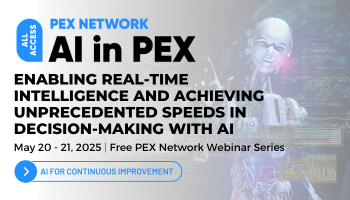Custom processes are key to successful application lifecycle management
Adapting processes and applications to changing strategies or new business requirements is integral to success
Add bookmark
Successful business transformation requires the capability of connecting the different dots within your company to a holistic picture. Without a good alignment of strategy, business processes, IT and applications and all relevant stakeholders, it will be hard to succeed in today’s economic reality.
Many of the different phases relevant within application lifecycle management (ALM) are (or should be) in close contact with business processes. Of course, in the implementation part, (to-be) business processes are used as input for the design of the technical process, e.g. for finding out where the need is for adaptation of the standard processes. In the following testing phase, test documentation based on the business process is also highly relevant to support end-to-end testing via walkthroughs, no matter if this is done in an automated way or with human interaction.
Don't miss any news, updates or insider tips from PEX Network by getting them delivered to your inbox. Sign up to our newsletter and join our community of experts.
As business processes are representing the “business” view (and reality), possibly they may also include a lot of steps that are not supported in the respective application (manually executed or executed by other applications). They can also play a role as a backbone to train new employees during roll-out. Following the process and being able to navigate into the applications supporting or executing the specific task helps the end user to better understand what to do. Additional explanatory elements, like videos or other assets, offer supplementary information from which the user can benefit.
REGISTER: Be the first to use your processes in SAP Cloud ALM
Effective communication
To enable effective communication between all participants, you need a collective understanding and a common language. Processes are the central element that can support and bring together all facets. Although it makes sense to invest in standardization of processes (especially regarding running your systems in cloud environments and using software-as-a-service), the way you run your business will differentiate you from competitors. Being able to adapt your processes and your applications flexibly and fast to changing strategies or new business requirements (e.g. caused by changing or new regulations, customer expectations and behavior, technical progress) is key to remaining or becoming successful. You will have to find a way to balance and align standard processes as foreseen by the application itself, best practice (e.g. industry specific) and custom processes.
In the optimal world you would have one notation (like business process model and notation) to clarify, discuss and exchange. However, a notation with a more technical focus will leave out important aspects that can be relevant to better understand the why and the why in that way (even if you can add a lot of information e.g. as notes). A pure description of the technical aspects will not be sufficient. The description of the business process will hardly be identical to the technical one, and this is even more true if you include not only the business process owner, but also other non-IT-related stakeholders. Enhancing your processes with topic specific additional items like norms, risks and policies can increase the understanding of the requirements of the non-technical stakeholder. Also, being able to make visible the source and context for specific business requirements (e.g. legal aspects relevant in a specific country) offers helpful background information.
Depending on stakeholders involved, different representations of the content can help to better understand the content. Not everyone who should be included is trained, able or willing to discuss on a graphical model showing some “swim lanes,” rectangles, dots and arrows. For some stakeholders bringing in specific expertise, table-based representation would be the appropriate way for communication as this much more fits to their day-to-day work. Others have a better understanding of the content if they do not see the whole process but can focus on the single steps and would like to see all relevant satellite information. Thus, you will have to enable all relevant stakeholders to bring in and consume their input in a way they accept and will not lead to boycott activities.
Aligning and incorporating so many different players will force you to implement good governance for gathering and releasing content. This is also true regarding synchronization between both systems, BPM and ALM.
Relevant content
Having so many different facets in one system of course will also raise some issues. To not run into an information overflow, it is important to be able to concentrate on relevant content. Flexible filtering and access rights can help in such situations. Not everything documented within your custom processes is automatically needed in the ALM context, but having the chance to access further assets and more detailed information, if necessary, will help to finally achieve better results.
As an example, how a business transformation suite like ARIS offers a well-established synchronization with SAP’s ALM was just enhanced with some new capabilities. A newly released custom process API now allows users to bring process content into SAP Cloud ALM. Value flows and solution process flows are imported into the process authoring app and can be used to define requirements for the IT implementation team. Navigation capabilities into ARIS enable these users to access additional detailed information and to communicate with all relevant (non-IT) stakeholders. Implementing applications that really fit the business needs will strengthen companies’ position and help to achieve process excellence.
All Access: AI in PEX is 2025

All Access: AI in PEX 2025 is designed to address these challenges and empower organizations to successfully integrate AI into their process improvement initiatives. The content series will bring together industry experts, thought leaders, and practitioners to share insights, best practices, and real-world case studies.
Register Now




















